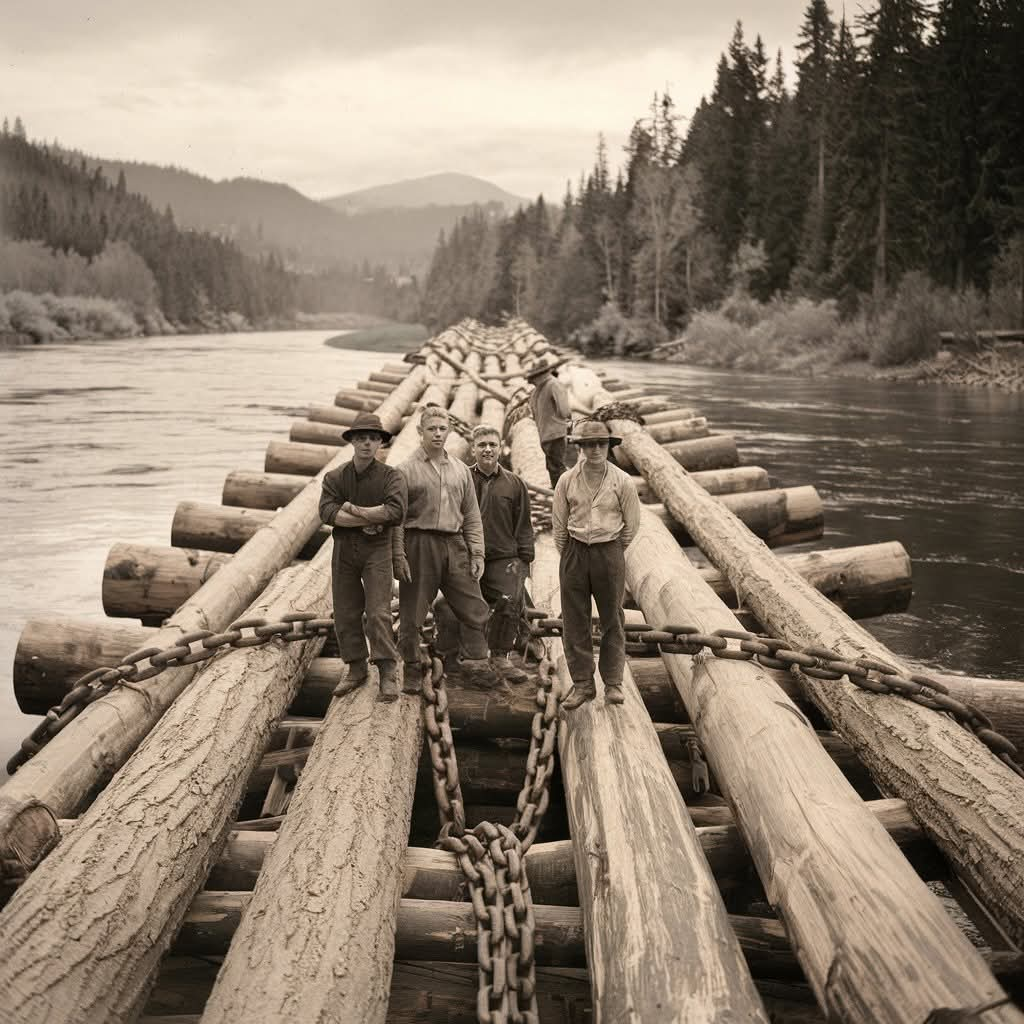
The raft was constructed from large, tree-length logs, all meticulously lashed together using enormous chains to create a floating platform. This incredible feat of engineering was typical of the lumber industry at the time, where logs were often transported down rivers for processing. The image showcases the scale and strength required to build such a raft, a testament to the hard work and ingenuity of the era.
According to the description on the back of the photo, the raft contained millions of feet of timber—an enormous amount of wood that represented a full year’s worth of labor for the camp workers. The value of the raft, once completed, was estimated at $8,000, highlighting the profitability of the logging industry during this period. The Columbia River, with its swift currents and strategic location, served as a major route for transporting timber, and these massive log rafts were an essential part of the process.
This photograph, preserved by the Multnomah County Library, offers a fascinating glimpse into the early 20th-century logging practices in Oregon. It’s a vivid reminder of the human labor and resourcefulness that drove the lumber industry, and the scale of the operations that transformed the landscape of the Pacific Northwest. The raft, both a product of necessity and a symbol of the era, represents a bygone time when logs were floated across rivers to fuel the growth of America’s industries.











Leave a Reply